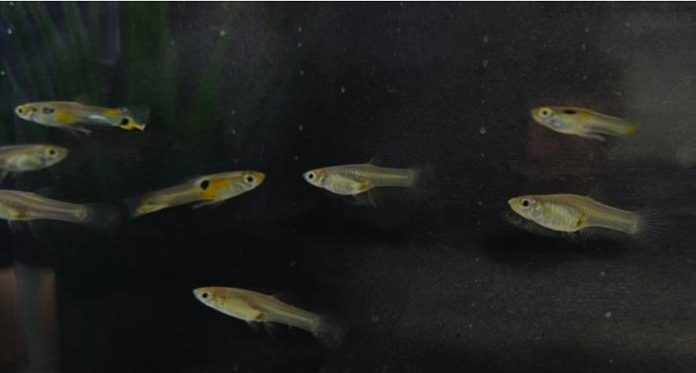
Scientists at the University of Exeter have made a fascinating discovery about Trinidadian guppies, tiny fish known for their colorful appearance.
These guppies have challenged the “volunteer’s dilemma,” a concept suggesting that individuals are less likely to cooperate in large groups.
While this dilemma has been observed in humans, guppies have shown a different behavior.
In a new study, guppies in larger groups were more willing to take risks and approach predators to gather crucial information for the safety of their shoal.
The volunteer’s dilemma revolves around the idea that when faced with a collective task, individuals are less likely to cooperate in larger groups.
Numerous studies have confirmed this pattern in humans. However, the guppies studied in this research appear to defy this trend.
To assess the guppies’ behavior, the researchers from the University of Exeter conducted an experiment. They placed a clay model of a pike cichlid, a natural predator of guppies, in a tank with small, medium, and large groups of guppies.
Surprisingly, the guppies in larger groups were the most likely to approach and inspect the predator. These individuals from larger groups made an average of 14 inspections during the seven-minute trials.
Guppies face a delicate balancing act when confronted with a possible predator. At least one guppy needs to approach the predator to gather information about potential threats. However, this individual takes the risk of being eaten.
If no guppy takes the risk, the entire group remains unaware of the danger. Mathematical models suggest that individuals in larger groups should be less willing to cooperate due to the increased likelihood of another guppy taking the risk.
The study’s findings puzzled the researchers. While they cannot say for certain why guppies in larger groups were more cooperative, they speculate that larger groups may have a higher chance of containing cooperative individuals, who then serve as leaders.
It is also worth noting that guppies have distinct personalities, which might influence their cooperative behavior.
After inspecting a predator, guppies return to the safety of their group. Previous research has shown that their behavior communicates danger to other group members.
During the study, an “inspection” was recorded when a guppy approached within 30cm of the predator. This was typically done by individual guppies or small sub-groups from the main shoal.
The recent study published in the journal Proceedings of the Royal Society B has shed light on the surprising behavior of guppies in larger groups. Contrary to the volunteer’s dilemma observed in humans, guppies demonstrated greater cooperation when faced with potential danger.
These findings open up exciting avenues for further exploration of social behavior in animals. The intricate dynamics of cooperation and risk-taking within guppy shoals provide valuable insights into the diverse strategies employed by different species.
Follow us on Twitter for more articles about this topic.



